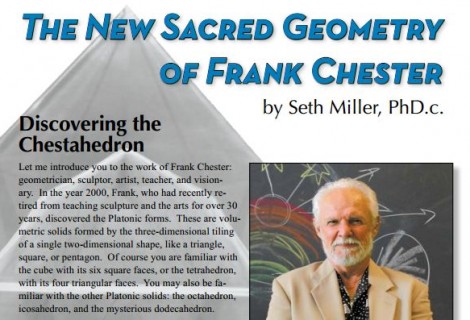An Esoteric Guide to Spencer Brown’s Laws of Form #5
« Previous Page | 1 2 3 4 5 | View All | Next Page »
(New readers will want to start with the first installment.)
We ended the last installment with a recognition that the Laws of Form naturally led GSB to an understanding of both the necessity and importance of the realm of imaginary numbers. We will continue this elaboration.
You are likely familiar with the paradoxical sentence: “This sentence is false.” Is it false or true? The answer is yes, and it depends on when you ask me. It was this kind of paradox that drove Russell and Whitehead into creating their Theory of Logical Types, which was designed specifically to prevent this kind of thing from simply ever coming up in the first place. GSB is not so limited, and understands the importance of formally including paradox in his calculus. So how does he deal with this?
He points out that we are driven to a higher order of logic, one that includes re-entry. In the first Esalen lecture, GSB states that
- “This has been totally overlooked in mathematics, that i is in an oscillatory state. Because in order to get over this paradox of x-squared equals minus one, we see that we can’t use any ordinary form of unity so we invent in mathematics another form of unity and we-call it i, which is the root that satisfies that equation.”
Let me continue quoting him at length, because his own dialogical presentation is quite apt:
- It is really an oscillation defining time; but it is the first time, and, therefore, being the first time, the oscillations are without duration, so the wave has no shape at all. Just as the space of the first distinction has no size, no shape, no quality other than being states. This is one of the things that tend to upset people. It is part of the mathematical discipline that what is not allowed is forbidden. That is to say, what you don’t introduce, you can’t use. And until you have introduced shape, size, duration, whatever, distance, you can’t use it.
- In the beginning of Laws of Form, we defined states without any concept of distance, size, shape–only of difference. Therefore the states in Laws of Form have no size, shape, anything else. They are neither close together nor far apart, like the heavenly states. There is just no quality of that kind that has been introduced. It’s not needed.
- The same with the first time. The first time is measured by an oscillation between states. The first state, or space, is measured by a distinction between states. There is no state for a distinction to be made in. If a distinction could be made, then it would create a space. That is why it appears in a distinct world that there is space.
- Space is only an appearance. It is what would be if there could be a distinction.
- Similarly, when we get eventually to the creation of time, time is what there would be if there could be an oscillation between states. Even in the latest physics, a thing is no more than its measure. A space is how it is measured; similarly, time is how it is measured. The measure of time is change. The only change we can produce–when we have only two states–the only change we can produce is the crossing from one to another. If we produce an expression, like the ordinary expressions in the algebra, we have to make the crossing. We have to do something about it. We have to operate from the outside. If we produce that cross that feeds into itself, now we don’t have to do any thing. It is a clock, just as an ordinary distinction is a rule. A rule makes or defines space, and a clock defines time. In making our first distinction all that we have done is introduce the idea of distinction. We have introduced nothing else. No idea of size, shape, distance, and so on. They do not exist, not here. They can be constructed, and they will be, but not yet. They are what happens when you feed the concept back into itself enough times.
- Again, when you first construct time, all that you are defining is a state that, if it is one state, it is another. Just like a clock, if it is tick, therefore it is tock. But this time is the most primitive of all times, because the intervals are neither short nor long; they have no duration, Just as these states have no size.
All we need to add is that when he says “In making our first distinction all that we have done is introduce the idea of distinction. We have introduced nothing else.” we can recognize something of the complexity of what this idea of distinction is, and how it acts.
« Previous Page | 1 2 3 4 5 | View All | Next Page »





